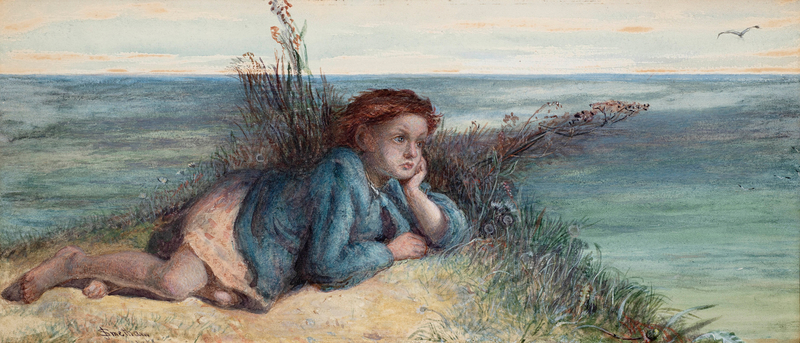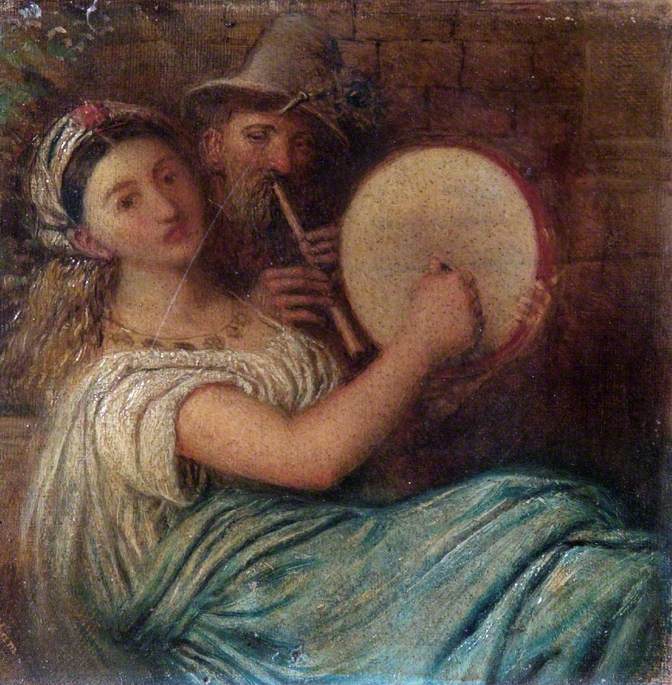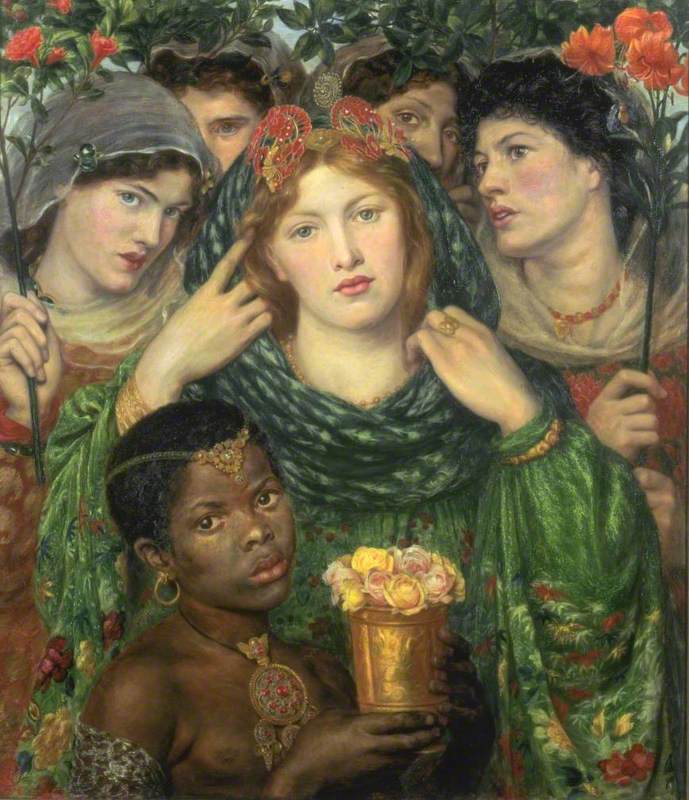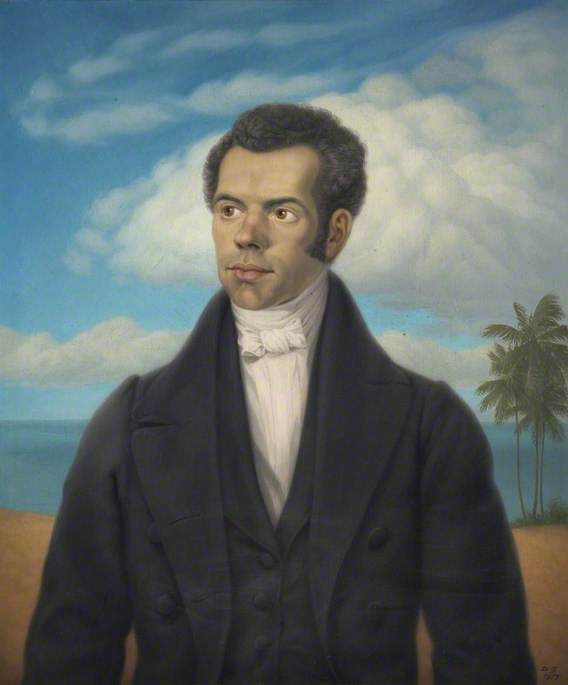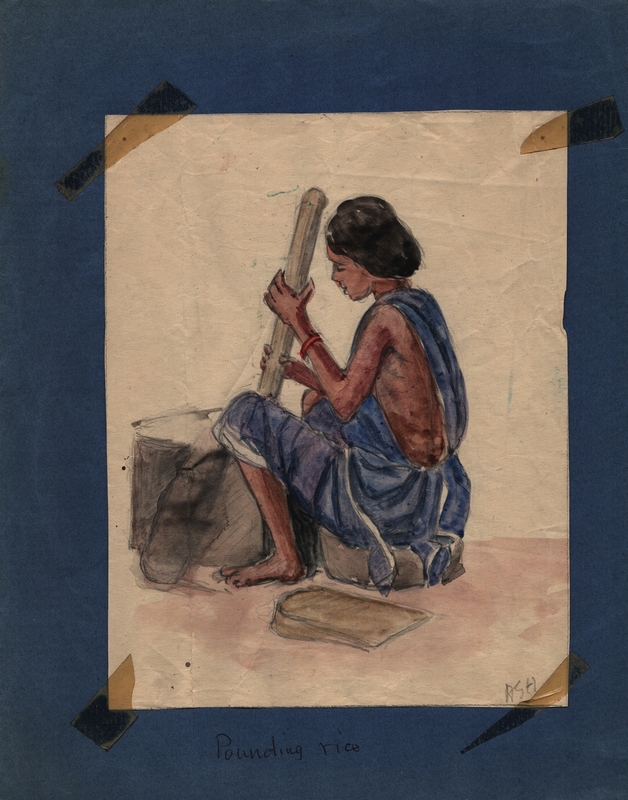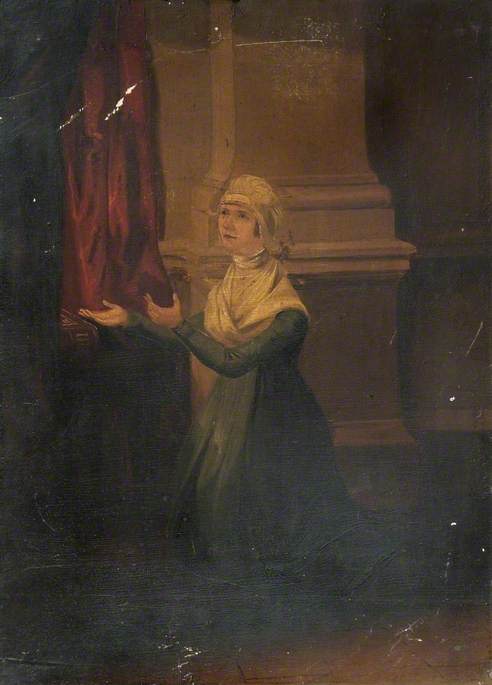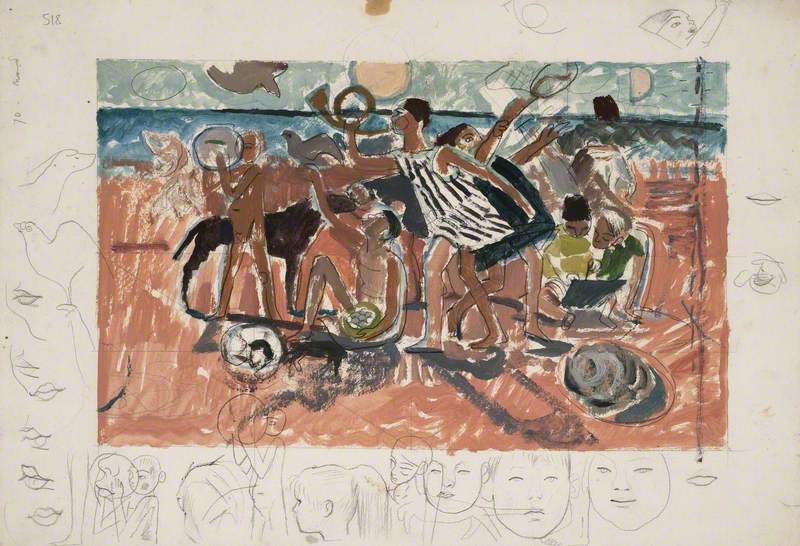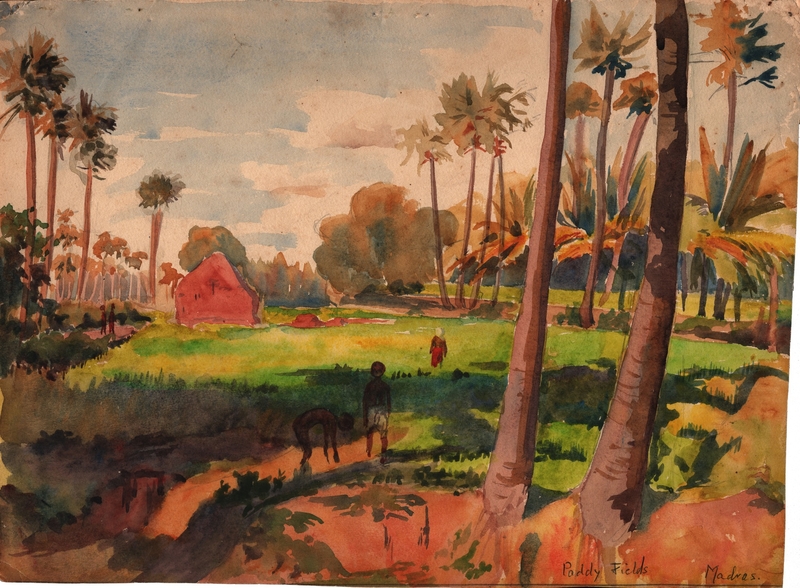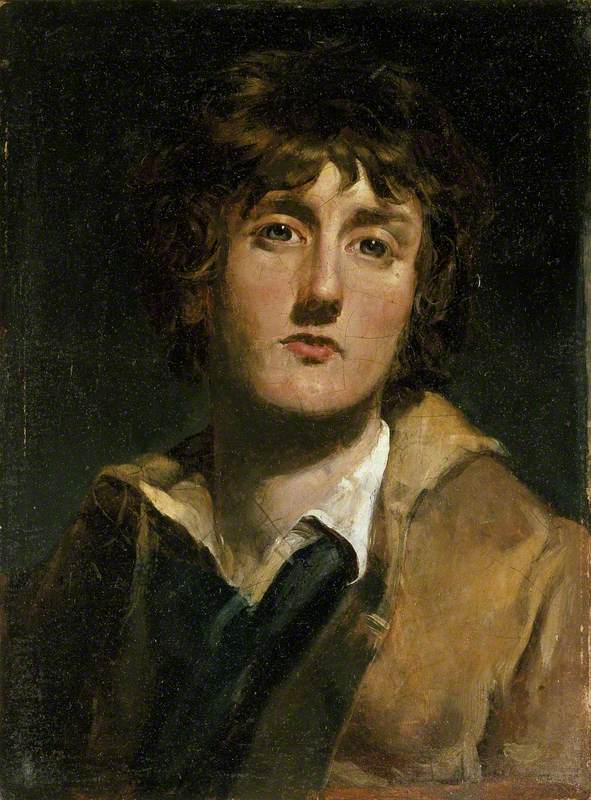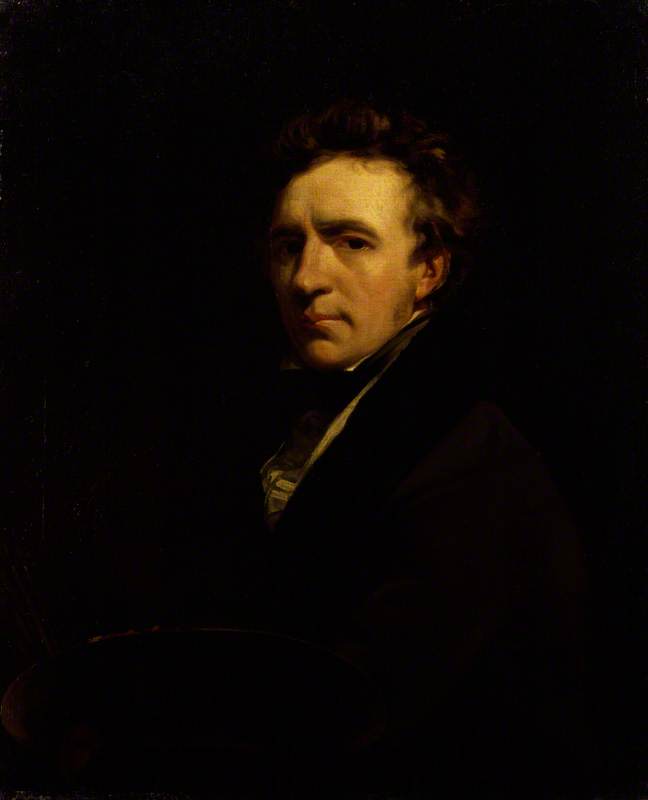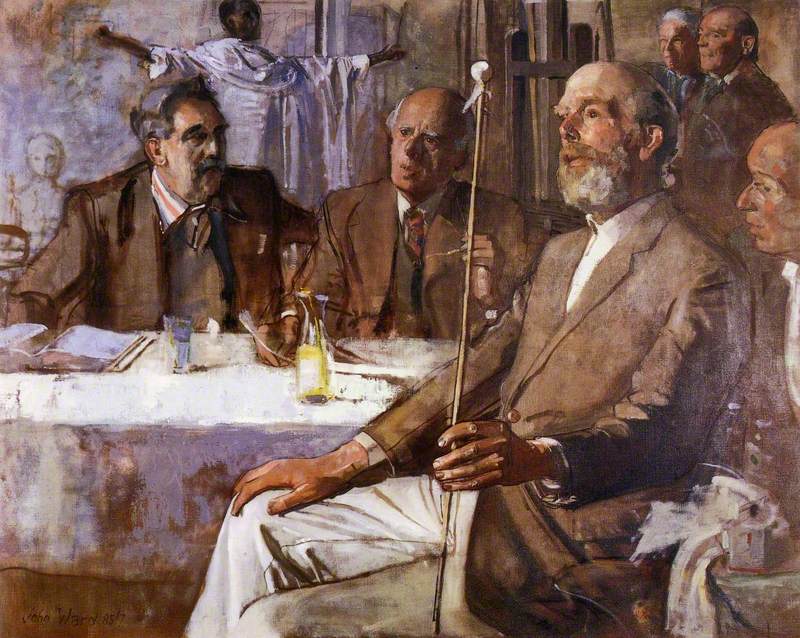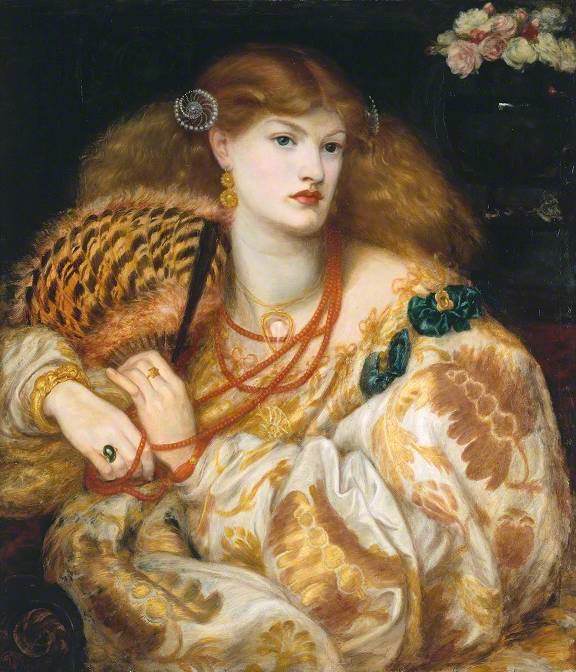This exhibition was curated by OBU Art History undergraduate students. Over the course of the semester, students on the 'Curatorial Practice' module have been considering what it means to curate works of art in a modern museum or gallery setting. Topics they have engaged with include what we mean by 'curation', the responsibilities of custodial work, audiences, funding, contested heritage and the critical assessment of current exhibitions. In response, the students put together an exhibition drawing from the collections of the Oxford Centre for Methodism and Church History. This digital précis presents a selection of works displayed at the Harcourt Hill campus of Oxford Brookes University, April 2022.
-
James Smetham and the Natural World
James Smetham was a Pre-Raphaelite artist whose artworks reflected the aesthetics of Romanticism, often making reference to the natural world. This included subjects such as religion and representing everyday life, and often using literary references. Although Smetham remained relatively unknown in his career, he was undoubtedly a prolific artist. This is reflected in his vast output of works including over 500 paintings, etchings, and sketches. Although better known as a visual artist he also produced a substantial number of poetry and writings. Despite not being heavily featured in previous Pre-Raphaelite exhibitions, this will hopefully be the first of many.
-
Hugh Miller Watching for His Father's Vessel
Hugh Miller Watching for His Father's Vessel 1866Resembling a putto, we know this playful child is Hugh Miller, who gazes out to sea for a sign of his father’s boat, a shipmaster in the coasting trade. The words written by Smetham provide a bittersweet tone to the composition and this combination of words and pictures so as well as the gilded oak frame is typical of Pre-Raphaelite aesthetics.
James Smetham (1821–1889)
Watercolour on paper
H 40 x W 70 cm
The Oxford Centre for Methodism and Church History
-
Woman with a Tambourine (Irene with a Tambourine)
Woman with a Tambourine (Irene with a Tambourine) c.1864–1868This painting exemplifies Smetham’s association and collaboration with the Pre-Raphaelite brotherhood mainly due to close personal friendships with Dante Gabriel Rossetti, an integral artist of the brotherhood. Painted in Rossetti's studio, the woman’s appearance is remarkably like that of Rossetti's wife and muse Elizabeth Siddall. It is also one of his most sensual paintings mainly because of the man’s directed gaze at Irene’s chest whereas her gaze is averted.
James Smetham (1821–1889)
Oil on canvas
H 14 x W 14.1 cm
The Oxford Centre for Methodism and Church History
-
The Beloved ('The Bride')
The Beloved ('The Bride') 1865–6
Dante Gabriel Rossetti (1828–1882)
Oil on canvas
H 82.5 x W 76.2 cm
Tate
-
James Smetham - Methodist and Artist
In this part of the exhibition, we follow Smetham’s works chronologically, to explore how his work shifts from being explicitly biblical to a Pre-Raphaelite approach which has a religious interpretation at its core. We can observe an increase in maternal imagery, labour and pastoral idylls as he adjusts his art to be in line with his Methodist teachings. Smetham etches didactically to spread awareness of his religious principles whilst veering away from art’s indulgences so as to justify his work as God’s work, with Heaven as the ultimate goal.
“If it should please God to give me health and strength for a few years longer, I may be able to show them a phase more likely to meet with their approval" - James Smetham, 1863
-
The Lord of the Sabbath
Here Smetham borrows imagery from the Bible’s “The Lord of the Sabbath” with a wheat field. The landscape lends itself to the Pre-Raphaelite undertaking of nature; infusing it with the close family orientated principles of the Methodist doctrine as a mother teaches her child the bible story as she points to the labours. This comments on the Christian ideas of duty and community as the boy observes the field workers.
James Smetham, etching on paper (1861)
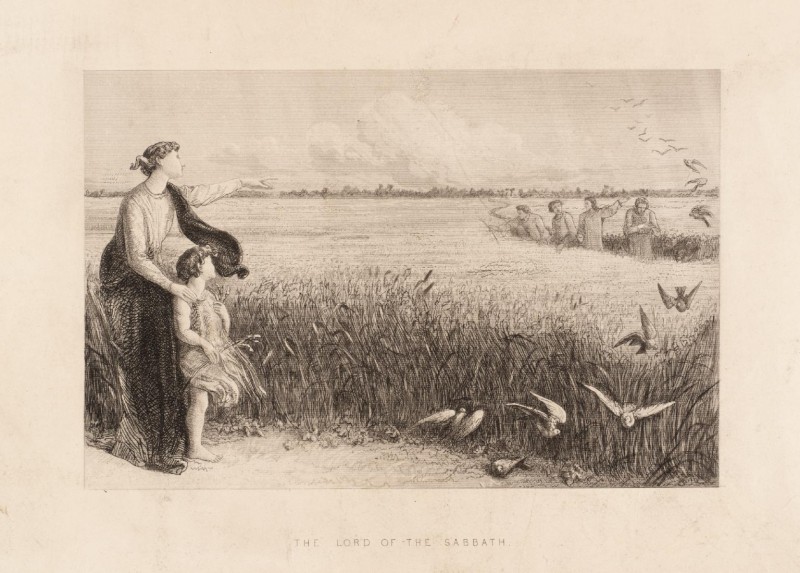 Image credit: Oxford Brookes University
Image credit: Oxford Brookes University
-
The Death of Earl Siward
Three figures stand in front of an arch, Earl Siward stands in the middle being held. The etching ‘The Death of Earl Siward’ depicts and commemorates the death of Siward the Strong, leader of the English army in Shakespeare’s Macbeth, who wished to die clothed in his armour standing upright. This print reflects ideas in the Methodist church about how death is a step closer to eternal life with God.
James Smetham, etching on paper (1861)
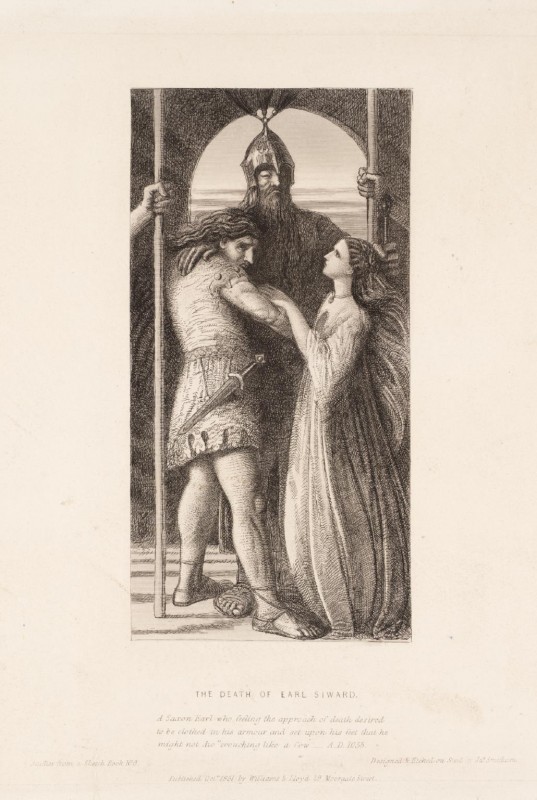 Image credit: Oxford Brookes University
Image credit: Oxford Brookes University
-
Missionaries and Colonisation
By linking these paintings with thematic similarities this exhibition aims to publicly raise the question whether it was the missionaries’ intention to radically take control over Africa during the nineteenth century, or if they were unintentionally assisting colonisation by spreading their beliefs to the native people. Arguably, missionaries cannot be categorised in the same group as political and economic colonisers, since their intentions seem to have a different cause. Their cause was possibly not driven by selfish intentions, but perhaps by their responsibility to the Church and spreading the word of God.
-
Reverend Thomas Birch Freeman (1809–1890)
Reverend Thomas Birch Freeman (1809–1890) 1975Thomas Freeman, a British Methodist missionary, is shown disengaged with the viewer, turning his head in three quarter profile towards the landscape. The background situated him on the Gold Coast. He established multiple schools focusing predominantly on biblical knowledge, literacy and arithmetic and was regarded as a pioneer to this institute in West Africa.
David Grice (b.1922)
Oil on canvas
H 76 x W 63.5 cm
The Oxford Centre for Methodism and Church History
-
Pounding Rice
Pounding Rice 1923–1951This work is a watercolour on paper, depicting a young woman practising a method of dehulling rice by continually raising and then dropping the heavy head or pestle of the pounder into a block or mortar. The artist served as an Educational Missionary in South India from 1923-1951.
Agatha Gay Hellier (1897–1980)
Watercolour on paper
H 32 x W 25 cm
The Oxford Centre for Methodism and Church History
-
From Matron to Matriarch
Using six works from the Brookes Collection, this exhibition focuses on the representations of a collection of women in art, from the early 19th century to the late 20th century. Between c.1800 and 1958, there has been a significant development in the role of women in both a religious and educational setting and this exhibition aims to reflect this. It will focus on three themes: the role of women within the Methodist Church, the damsel in distress; a favoured subject matter of the Victorians, and the role of women in senior positions within academia.
-
Mary Taft (1772–1851)
Mary Taft (1772–1851)This painting by John Jackson depicts a praying Mary Taft, who was a key female figure in the Methodist Church. Her preaching was inspiring to many yet she was also a problematic figure within the debate of whether to allow female preachers within the Church. In 1803 at the annual Methodist Conference, strict restrictions were placed against female preachers. These restrictions would not be lifted until 1973.
John Jackson (1778–1831) (after)
Oil on canvas
H 47.5 x W 34.5 cm
The Oxford Centre for Methodism and Church History
-
Sketch for 'Miss Dora Cohen'
Sketch for 'Miss Dora Cohen' 1958Commissioned by Bletchley Park College, which Cohen transformed during her time as principal, the preparatory sketch depicts the hand of the sitter for her official portrait. The college served, during a time where opportunities for young females were scarce, as an educational institute for women to learn about engineering, science, music, and the arts. Cohen is remembered for spearheading the emancipation of women within academia in the twentieth century.
John Stanton Ward (1917–2007)
Oxford Brookes University Special Collections and Archives
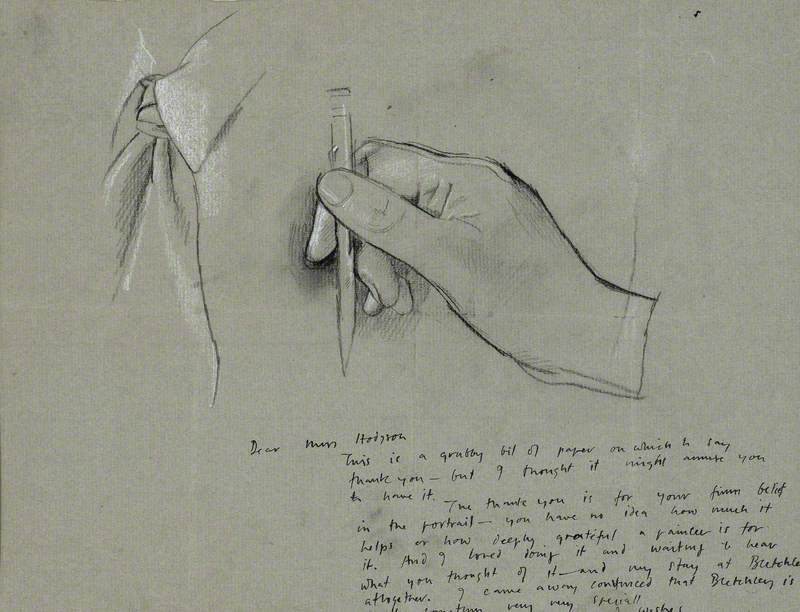 © the artist's estate / Bridgeman Images. Image credit: Oxford Brookes University Special Collections and Archives
© the artist's estate / Bridgeman Images. Image credit: Oxford Brookes University Special Collections and Archives
-
The Life and Lost Works of Evelyn Dunbar
Over 1000 lost works by Evelyn Dunbar were recently discovered and auctioned, including the sketches for Dunbar’s work at Bletchley Park College such as the preparatory sketches for ‘Alpha’ and ‘Omega’ panels (1957). The finished versions of these originally hung in the library of Bletchley Park and moved with the College in 1966 to Wheatley which eventually became part of Oxford Polytechnic in 1975, later Oxford Brookes University in 1992. The works on display are now part of the Evelyn Dunbar Collection owned by the Oxford Centre for Methodism and Church History. Through displaying these collections of sketches and preparatory works Dunbar’s legacy can be further celebrated.
-
Preparatory Sketch, 'Alpha and Omega'
Preparatory Sketch, 'Alpha and Omega' 1958Dunbar’s ‘Alpha’ and ‘Omega’ panels were painted for the library of Bletchley Park College as an alternative to Dunbar’s unfinished Bletchley Mural. They are based on the college motto ‘In my ends is my beginning’ which is represented by the shape of the hunting horn and an idea related to a chapter in Revelation. The finished panels have since been moved to Wheatley and now belong to Oxford Brookes University.
Evelyn Mary Dunbar (1906–1960)
Ink on paper
Oxford Brookes University Special Collections and Archives
-
Sketchbook, Alec Dunbar
This sketch is thought to be of Evelyn’s brother Alec, the second youngest of her four siblings. There is speculation, however, that it may in fact depict her eldest sibling Jessie, as a portrait of her shows her with a very similar haircut. Furthermore, she is often depicted in side profile or with her eyes closed due to a squint in her eye, as seen in Jessie Dunbar, c.1932.
Evelyn Dunbar, sketchbook (c1940s)
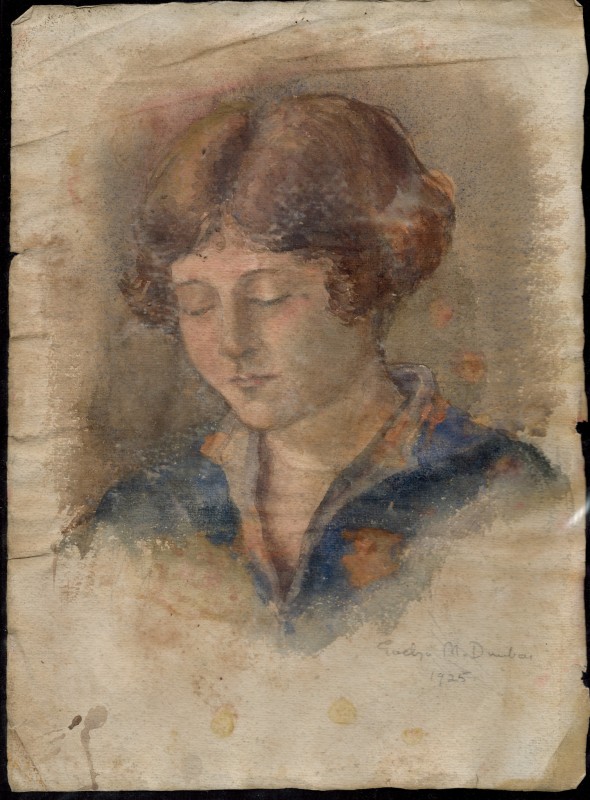 Image credit: Oxford Brookes University
Image credit: Oxford Brookes University
-
Calm & Chaos: Illustrating Climate Change
The thunderous crashing of wages, the thick air of smoke. A dizzying Escheresque interior; the stillness of an English field. Each sensory image in this collection seeks to explore moments of relative calm in contrast to catastrophic turmoil. The theme of climate change echoes within the works. The artists showcase particular interests in the world surrounding them - there is an emphasis on the equally beautiful and startling violence that accompanies an unsteady climate.
-
Effect of Cyclone Flora on Bainet, Haiti
Effect of Cyclone Flora on Bainet, Haiti 1963Cyclone Flora was a category 4 hurricane which hit the Caribbean in 1963. Jean-Baptiste's painting trembles on the cusp of Petite Riviere de Nippe, seconds before the cyclone hits. The immense intensity of the wave overpowers the structures below, highlighting the relative fragility of humankind. Cyclone Flora originated from the collision of the Intertropical Convergence Zone trade winds, which area significant cause of atmospheric heating.
Edgar Jean-Baptiste (active 1960s)
Oil on board
H 71.4 x W 96.5 cm
The Oxford Centre for Methodism and Church History
-
Flora
Flora is a token of Smetham's lifelong fascination with the English countryside. As a friend of John Ruskin, Smetham aimed to accurately portray nature as it appeared before him, following the hallmarks of the Pre-Raphaelite Brotherhood. Smetham recalls the Yorkshire countryside in his letters, as he would "...[regard] the distant blueness of the hills, and [see] the laurels shake..." The countryside gave Smetham inspiration to paint from life.
James Smetham, watercolour (19th cent.)
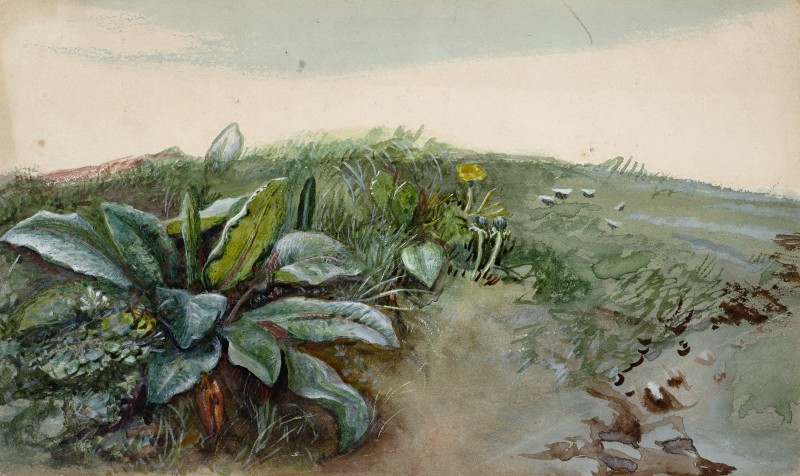 Image credit: Oxford Brookes University
Image credit: Oxford Brookes University
